#IndependentLiving
Text
Big Bodies, Big Needs: Introducing the Drive DeVilbiss Bradshaw Bariatric Low Bed
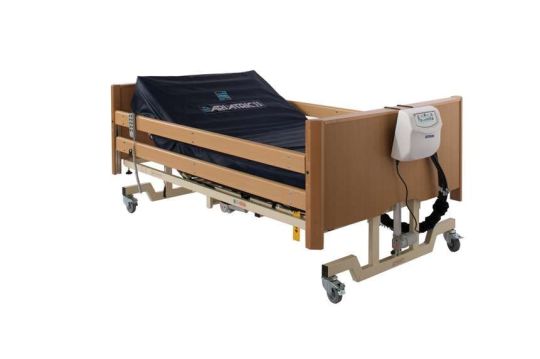
Hey guys, let's talk about hospital beds for home. Not just any beds, mind you, but beds built for superstars, queens of curves, and absolute units: the Drive DeVilbiss Bradshaw Bariatric Low Bed.
This ain't your grandma's floral print twin set. This is a beast of a bed, holding strong for up to 318kg (that's 50 stone!) with a low platform to prevent any ouchies from tumbles. Plus, it's got all the bells and whistles to make being comfy a cinch:
Electric adjustments: Backrest, leg rest, and even the whole bed height move with the push of a button. Say goodbye to manual muscle strain!
Safety first: Sturdy side rails that lower for easy transfers and raise for peace of mind at night. Plus, the whole thing is built like a tank, so you know it'll last.
Comfort is key: Imagine sinking into a plush, adjustable throne that cradles your every curve. This bed lets you find the perfect position for reading, watching Netflix, or just chilling.
Easy clean-up: Smooth surfaces and removable bed ends make wiping this down a breeze. No more germy hiding places!
Look, I know finding the right hospital bed for home can be a struggle. You want something strong, safe, and comfy, but you also don't want it to look like it belongs in a sterile hospital room. The Bradshaw Bariatric Low Bed nails it on all fronts. It's stylish, functional, and built to last, making it the perfect addition to any home.
So, if you're looking for a bed that can handle your amazingly unique body and give you the support and comfort you deserve, look no further than the Drive DeVilbiss Bradshaw Bariatric Low Bed. You're worth it! ✨
Feeling curious? Click the link in the source to learn more about this hospital bed game-changer and find out how to snag one for yourself. You won't regret it!
#bariatrics#barilife#bodypositive#largeandlovely#curveswithconfidence#selflove#embraceyourself#plussizebeauty#mybariatricjourney#accessibleliving#adaptivedesign#independentliving#empowerment#dignity#qualityoflife#healthyweageing#wellnessfirst#mobilityshop#mobilityaids#mobility#mobilityshopuk#disability#disabledaids#accessories
2 notes
·
View notes
Text
5 Things To Look For If You Want To Live Comfortably in Independent Living
When looking for independent living, there are several key factors to consider in order to ensure a comfortable living experience. Firstly, it is important to assess the amenities and services provided by the facility, such as housekeeping, meal options, and recreational activities. Additionally, evaluating the level of care and support available, including assistance with daily tasks and access to healthcare professionals, can greatly contribute to your loved one's comfort and well-being in their new living arrangement. Read this blog to learn more about this: https://independent-community-living.gitbook.io/healthcare/
#supportedindependentliving#independentliving#independentseniorliving#independentassistedliving#independent
2 notes
·
View notes
Text
Help Mike Grauer, an autistic adult, achieve independence and financial stability! Donate to our GoFundMe campaign and help him get a working motorhome 🚐
----
#GoFundMe #fundraiser #donate #autismawareness #independentliving #motorhome #financialstability
3 notes
·
View notes
Photo

From now until the end of January there is £15 our Foldeasy portable toilet frame. Check the link in our bio to find out more Images description: Words “£15 off Buckingham Foldeasy – folding toilet frame until the end of January”. Beneath this on the left is an image of the frame folded up. On the right is an image of the frame around a toilet Underneath are the words “This portable frame goes around a toliet to provide support and stability. It's perfect for stays away too.” The background is purple. #DifferentAidsForDifferentDays #MobilityAids #IndependentLiving #AccessibleHomes #HomeAwayFromHome #ShopNow #DisabilityLife #BabeWithAMobilityAid #DisabilityShop #AdaptiveHome #AccessIsLove #DisabilityDecor #DisabledLives #TravelEssentials https://www.instagram.com/p/CnkO1FAIMLZ/?igshid=NGJjMDIxMWI=
#differentaidsfordifferentdays#mobilityaids#independentliving#accessiblehomes#homeawayfromhome#shopnow#disabilitylife#babewithamobilityaid#disabilityshop#adaptivehome#accessislove#disabilitydecor#disabledlives#travelessentials
1 note
·
View note
Text

Discover the importance of Supported Independent Living (SIL) accommodation in Sydney and explore the comprehensive services offered by PHOME Care. Learn how their person-centered approach, experienced staff, and focus on community integration empower individuals with disabilities to live independently and thrive. Find out more about SIL accommodation options and holistic support services, tailored to enhance quality of life and foster inclusion. Unlock independence with PHOME Care in Sydney.
0 notes
Text
Who is the father of disability?

https://dp-ho.com/perspective/who-is-the-father-of-disability-excluded-community(opens in a new tab)
#•#disabilityrights#disabilityadvocate#disabilityinclusion#celebratedisability#disabilityhistory#whd#edroberts#disabilityleader#independentliving#disabilitystudies#berkeley#whoknew#funfact#disabilityhero#makingadifference
0 notes
Text
Medical Alert Devices: A Lifeline For Safety And Independence

(Source-healthline)
Medical alert devices, also known as personal emergency response systems (PERS), are invaluable tools designed to provide immediate assistance in case of medical emergencies or situations where help is needed urgently. These devices offer peace of mind to individuals with medical conditions, seniors living alone, and anyone who may be at risk of accidents or sudden health issues. In this article, we will explore the importance, features, and benefits of medical alert devices, as well as their impact on the lives of users and their caregivers.
Introduction to Medical Alert Devices:
Medical devices are wearable or portable gadgets equipped with various features to enable users to call for help quickly and easily in case of emergencies. The primary function of these devices is to connect users with emergency response teams, caregivers, or designated contacts at the press of a button. They typically consist of a wearable pendant or wristband with an emergency button, a base unit connected to a landline or cellular network, and a monitoring service that responds to distress calls 24/7.
Features and Functionality:
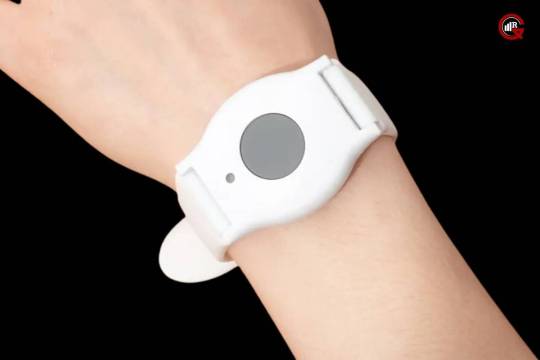
Most medical devices come with a range of features to ensure user safety and convenience. Some common features include:
Emergency Button: The main component of the device, usually in the form of a button on a wearable pendant or wristband, allows users to call for help instantly when pressed.
Two-Way Voice Communication: Enables users to communicate directly with a response agent through the device’s base unit or speakerphone.
Fall Detection: Advanced devices may include fall detection sensors that automatically trigger an alert if a fall is detected, even if the user is unable to press the emergency button.
GPS Location Tracking: GPS-enabled devices can provide precise location information to responders, allowing them to locate the user quickly, especially if they are outside the home.
Medication Reminders: Some devices offer medication reminder features to help users manage their medication schedules and adhere to prescribed treatments.
Benefits of Medical Alert Devices:
Immediate Assistance: Medical alert devices provide users with immediate access to help in emergencies, reducing response times and potentially saving lives.
Independence: By enabling users to call for help independently, these devices promote autonomy and allow individuals to continue living alone or with minimal assistance.
Peace of Mind: For users and their families, medical devices offer peace of mind knowing that help is always available at the touch of a button.
Extended Reach: With features like GPS tracking and fall detection, medical alert devices can assist both inside and outside the home, giving users greater mobility and freedom.
Cost-Effective: Compared to alternative options such as assisted living facilities or round-the-clock caregiving, medical devices offer a more affordable solution for ensuring safety and well-being.
Types of Medical Alert Devices:
Medical alert devices come in various forms to cater to different user needs and preferences. Some common types include:
In-Home Systems: Designed for use within the home, these systems typically consist of a base unit connected to a landline or cellular network and wearable help buttons.
Mobile Systems: Portable devices equipped with GPS technology that allow users to call for help from anywhere, not just within the home.
Wearable Devices: Compact devices worn as pendants, wristbands, or clips that provide discreet access to emergency assistance.
Smartwatch Apps: Some smartwatches and fitness trackers offer medical alert features, including emergency calling and health monitoring capabilities.
Considerations When Choosing a Medical Alert Device:
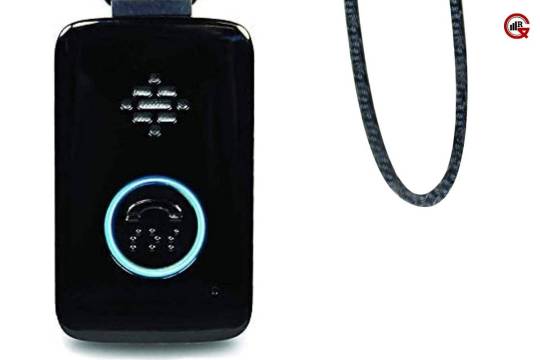
When selecting a medical alert device, several factors should be considered to ensure it meets the user’s needs and preferences:
Coverage and Connectivity: Check the device’s compatibility with the user’s location and network coverage to ensure reliable connectivity.
Battery Life: Consider the battery life of the device and how often it needs to be recharged or replaced, especially for mobile or wearable devices.
Ease of Use: Look for devices with simple, intuitive controls and clear instructions for operation, especially for users with limited dexterity or cognitive impairments.
Monitoring Service: Evaluate the quality and responsiveness of the monitoring service, including response times, staff training, and availability of multilingual support.
Cost and Pricing Plans: Compare the costs of different devices, including upfront fees, monthly subscription fees, and any additional charges for extra features or services.
Installation and Setup: Consider the ease of installation and setup when choosing a medical alert device, especially for in-home systems. Look for devices that require minimal installation and can be set up quickly without the need for professional assistance. Some systems may offer plug-and-play functionality or wireless connectivity, making them ideal for users who prefer simple and hassle-free installation processes.
Customization Options: Look for medical alert devices that offer customization options to tailor the device to the user’s specific needs and preferences. This may include customizable emergency contact lists, personalized response protocols, and adjustable settings for features like volume, sensitivity, and alert notifications. Customization options allow users to optimize their devices for maximum effectiveness and comfort.
Compatibility with Additional Services: Consider whether the medical alert device is compatible with additional services or accessories that may enhance its functionality. This could include integration with home automation systems, compatibility with voice assistants like Amazon Alexa or Google Assistant, or the ability to connect to third-party health monitoring devices such as blood pressure monitors or glucose meters. Compatibility with additional services can expand the capabilities of the device and provide users with more comprehensive health management solutions.

Trial Periods and Return Policies: Look for medical devices that offer trial periods or satisfaction guarantees, allowing users to test the device and its features before committing. Trial periods allow users to assess the device’s performance, ease of use, and compatibility with their lifestyle before deciding whether to keep it. Additionally, check the device’s return policy and warranty terms to ensure peace of mind and protection in case of any issues or concerns.
Conclusion:
Medical alert devices play a crucial role in ensuring the safety, security, and independence of individuals with medical conditions or age-related vulnerabilities. By providing immediate access to help in emergencies, these devices offer peace of mind to users and their families, enabling them to live confidently and securely. As technology continues to advance, medical alert devices will evolve to offer even more features and capabilities, further enhancing their effectiveness and usability for users of all ages and abilities.
0 notes
Text
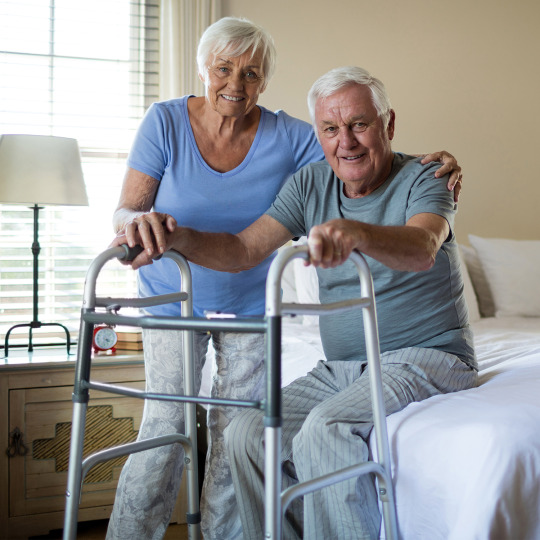
Step into independence with our Supregear Standard Folding Walker! 🚶♂️💪 Designed for seniors, the disabled, and the injured, this aluminum alloy walker offers stability and support with its adjustable design. With a robust capacity of up to 500 lbs, it's a reliable companion for your mobility needs. Get yours today and walk with confidence!
Explore through: https://www.supregear.com/products/b0bf9r8xbh-m-walker-holder?_pos=1&_sid=5e4b9b047&_ss=r
0 notes
Text
#WheelchairRent#RecoveryAid#MobilitySolution#RentACure#ChennaiRentals#IndependentLiving#ElectricWheelchair#WheelchairTypes#BariatricWheelchair#TransitWheelchair#PoweredWheelchair#StandUpWheelchair
0 notes
Text
Discover Freedom and Comfort with the Drive DeVilbiss Expedition Plus Transit Wheelchair!
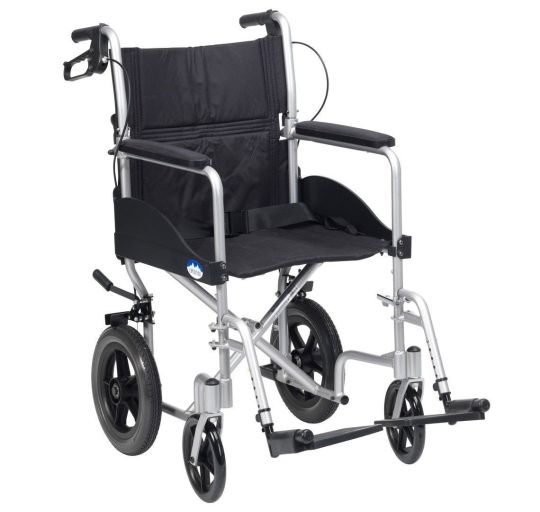
Looking for a mobility solution that combines lightweight design with top-notch features? The Drive DeVilbiss Expedition Plus Transit Wheelchair has got you covered! Here's why it's a game-changer:
🌈 Tailored Comfort: Say hello to quick-release footrest adjustment, full-length armrests, and a half-folding backrest. It's all about prioritizing your comfort!
🛑 Safety First: With both parking and attendant brakes, you're always in control. Plus, the lap belt ensures added safety while seated.
🚀 Smooth Maneuverability: Crafted from lightweight aluminum, this model offers improved maneuverability without compromising durability.
🔧 Easy Maintenance: The solid 12" rear wheels are puncture-proof for added convenience. Plus, the nylon seat and back are a breeze to clean.
🌟 Special Features and Benefits:
Stepper tubes for safe kerb mounting
Sleek aluminium frame for an attractive finish
Half folding backrest for easy storage
Puncture-proof rear solid tyres for durability
Arthritic-friendly loop handles for easy control
Full-length armrests with upholstered pads for extra comfort
🔍 Specifications:
SKU: EXP002SIL (Regular), EXP002SILHD (Heavy Duty)
Vat Exempt: Yes for both
Backrest Width: 42cm / Hand Grip Height: 97cm
Height: 97cm (Regular) / 99cm (Heavy Duty)
Length: 96cm (Regular) / 95cm (Heavy Duty)
Width: 56cm (Regular) / 60cm (Heavy Duty)
Width (Closed): 29cm (Regular) / 27cm (Heavy Duty)
Seat Depth: 40cm (Regular) / 42cm (Heavy Duty)
Seat Height: 48cm (Regular) / 47cm (Heavy Duty)
Seat Width: 47cm (Regular) / 51cm (Heavy Duty)
Product Weight: 12kg (Regular) / 12.5kg (Heavy Duty)
User Weight Capacity: 135kg (Regular) / 150kg (Heavy Duty)
This Drive DeVilbiss Expedition Plus Transit Wheelchair is a game-changer for those who prioritize comfort and convenience. Discover the freedom it offers today! Click here for more details about drive devilbiss wheelchairs.
Stay mobile, stay comfortable, and stay free!
#MobilityShop#MobilityShopUK#MobilityAids#LivingAids#BedroomAids#IndependentLiving#KitchenAids#Wheelchair#WheelchairSale#LightweightWheelchair#SelfPropelledWheelchair#BariatricWheelchair#ChildrensWheelchair#TransportWheelchair#RecliningWheelchair#AdaptiveLiving#MobilitySolutions#WheelchairAccessories#WheelchairAccessible#PowerPack#WalkingAids#WheelchairLife#Disability#WheelchairShop#DisabledAids#Mobility#Accessories#Rollators#Canes#Crutches
1 note
·
View note
Text
hahah feeling ko pinag-usapan nila ako nung nakaalis na ako sa dorm na yun. haha bahala sila. ung ugali nila ang nagpaalis sa akin
0 notes
Text
Let's help Mike Grauer, an inspiring autistic adult, achieve his dreams of independence and financial stability! Our GoFundMe campaign aims to provide him with a working motorhome that will allow him to live and travel freely. Your support can make a huge impact! 🚐
#GoFundMe #fundraiser #donate #autismawareness #independentliving #motorhome #financialstability
2 notes
·
View notes
Text
Enhancing Future Prospects for SEND Youth

A New Direction in SEND Support
Ofsted and the Care Quality Commission (CQC) have unveiled guidance for upcoming thematic visits aimed at evaluating the support systems in place for children and young people with Special Educational Needs and Disabilities (SEND) as they transition into adulthood. This initiative reflects a commitment to ensuring that SEND youth are adequately prepared for the challenges and opportunities of adult life.
Comprehensive Reviews on the Horizon
Scheduled between spring and summer 2024, these in-depth reviews will scrutinize every stage of a SEND child's journey towards adulthood—from early years through post-16 education. The focus is on understanding how well "Preparation for Adulthood" (PFA) arrangements are functioning across various local area partners in education, health, and social care sectors.
Key Areas of Focus
The thematic visits will delve into four crucial pathways outlined in the 'SEND code of practice': employment, independent living, community inclusion, and health. Inspectors will gather evidence directly from the children and young people with SEND, their families, and local area partners, aiming to understand how these groups collaborate to prioritize the aspirations and interests of SEND youth.
Empowering SEND Youth
Central to the reviews will be an examination of how SEND youth are supported to achieve their potential, make autonomous decisions, participate in society, and maintain good health as they transition to adulthood. The inspections will identify both the enablers and barriers that affect the effective preparation of young people with SEND for the challenges of adult life.
Voices from Ofsted and CQC
Lee Owston, Ofsted’s National Director for Education, stressed the current shortcomings of the SEND system in meeting the needs of children and their families. He expressed hope that the findings from these visits would inform improvements in the experiences of children with SEND. Nigel Thompson of the CQC highlighted the importance of involving children, young people, and their families in transitions, emphasizing the need for collaborative work among agencies and healthcare providers.
A Collaborative Effort for Change
The findings from these visits, slated for release in a national report in autumn 2024, will not only share examples of good practice but also address systemic concerns. This report aims to influence the development of policies under the SEND and alternative provision improvement plans by the Department for Education and the Department for Health and Social Care.
Shaping a Supportive Future
The upcoming thematic visits by Ofsted and the CQC mark a significant step towards enhancing the support system for children and young people with SEND in the UK. By focusing on a collaborative and evidence-informed approach, these efforts aim to ensure that every SEND youth has the opportunity to thrive and lead a fulfilling life in adulthood.
Sources: THX News & Ofsted.
Read the full article
#CareQualityCommission(CQC)#communityinclusion#education#employmentopportunities#healthandsocialcare#independentliving#Ofsted#PreparationforAdulthood(PFA)#SpecialEducationalNeedsandDisabilities(SEND)#thematicvisits
0 notes
Text
Best Independent Living for Senior Citizens | The Golden Estate
The Best in Independent Living for senior citizens at The Golden Estate. Experience vibrant communities, personal care, and world-class services. Experience a golden chapter of life with us. TGE offers the best in independent senior living, Live life on your terms - Choose The Golden Estate, your gateway to a fulfilling retirement. Contact Us!
0 notes
Text
Old Age Care In Pune
Experience top-notch Elder Nursing Care in Pune with our dedicated Old Age Care services. Our compassionate staff prioritises the health and well-being of seniors, offering personalised assistance in a nurturing environment. With a focus on dignified and professional nursing care, we ensure the comfort and happiness of our residents. Choose our facility for a secure and enriching experience for your loved ones in their golden years.
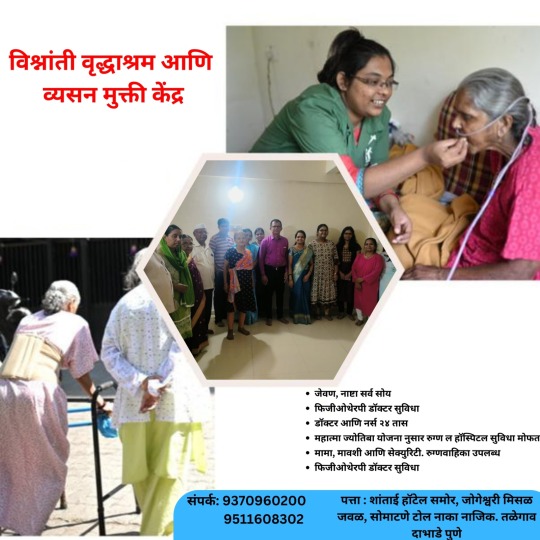
#OldAgeHome#SeniorCitizens#RetirementLiving#GoldenAge#SeniorResidence#IndependentLiving#EldercareServices#SeniorCommunity#ElderlyHomes#LongTermCare#AgedCareFacility#EldersHome#RetirementVillage#SeniorApartments#CareForSeniors#ElderlyLiving#SeniorCareHome
0 notes
Text
Enhancing Independence for People with Dementia or Brain Injuries
It is estimated that at least 850,000 people in the UK are living with Dementia and with our ever-growing population now living longer this is a matter that will continue to grow. Assistive technologies have the potential to significantly enhance the independence and quality of life for individuals with dementia or brain injuries. Around two thirds of doctors say they would like to be able to prescribe assistive technologies to their patients.
These innovative tools and devices can compensate for cognitive and physical impairments, facilitate daily activities, and promote safety. In this article, we will explore various assistive technologies that can empower individuals with dementia or brain injuries, allowing them to maintain independence and improve their overall well-being.
Here are 10 examples of assistive technologies and how they work:
Reminder Systems: Electronic reminder systems, such as medication reminders, appointment notifications, and task prompts, can help individuals with cognitive impairments stay organised and manage their daily routines effectively. These systems can be in the form of alarms, smart phone apps, or voice-activated devices.
2. GPS Tracking Devices: GPS tracking devices can enhance safety for individuals with dementia or brain injuries who may be prone to wandering or getting lost. These devices can be worn discreetly and provide real-time location information, allowing caregivers or family members to locate them quickly if needed.
3. Smart Home Technology: Smart home devices and automation can assist individuals with cognitive or physical limitations in managing various aspects of their home environment. Voice-activated assistants, smart thermostats, automated lighting, and remote-controlled appliances can provide convenience, energy efficiency, and increased accessibility.
4. Electronic Medication Dispensers: Automated medication dispensers can help individuals with memory difficulties adhere to their medication schedules. These devices dispense the correct medication doses at specific times, often accompanied by visual or auditory reminders, reducing the risk of medication errors.
5. Memory Aid Apps: Mobile applications specifically designed for individuals with memory impairments can assist with task management, memory recall, and daily reminders. These apps may include features like interactive calendars, to-do lists, photo albums, and voice recording capabilities.
6. Communication Apps: Specialised communication apps can support individuals with language difficulties or aphasia after a brain injury. These apps may offer picture-based communication systems, text-to-speech functions, or customisable communication boards to facilitate effective communication and self-expression.
7. Wearable Devices: Wearable devices, such as smartwatches or fitness trackers, can serve multiple purposes for individuals with dementia or brain injuries. They can provide reminders, track activity levels, monitor vital signs, and offer safety features like fall detection or emergency alerts.
8.Adaptive Equipment: Adaptive equipment, including mobility aids, assistive tools, and ergonomic devices, can enhance independence and functional abilities. Examples include walking aids, reachers, modified utensils, and grip-enhancing handles, which make daily tasks more manageable for individuals with physical limitations.
9. Environmental Control Systems: Environmental control systems enable individuals to control various aspects of their environment with ease. These systems can include voice-activated controls for lights, temperature, entertainment systems, and security features, empowering individuals to independently manage their surroundings.
10. Cognitive Training Apps: Cognitive training apps and software programs can help individuals with dementia or brain injuries exercise their cognitive abilities. These programs offer interactive exercises that target memory, attention, problem-solving, and other cognitive skills, providing mental stimulation and promoting brain health.
At Lapis Care we work closely with clients who have dementia and we have seen firsthand how these technologies can greatly improve a person’s well-being, safety and independence. From reminder systems and GPS tracking devices to smart home technology and adaptive equipment, these innovative tools empower individuals to engage in daily activities, maintain control over their environment, and overcome cognitive and physical challenges. By incorporating assistive technologies into care plans, individuals can lead more fulfilling lives while reducing dependence on others. It is important to assess individual needs, consult professionals, and select technologies that best match their abilities and preferences, ultimately promoting independence and enhancing their quality of life.
If you would like any further information regarding dementia support please visit: Admiral Nurse Dementia Helpline - Dementia UK or
0 notes